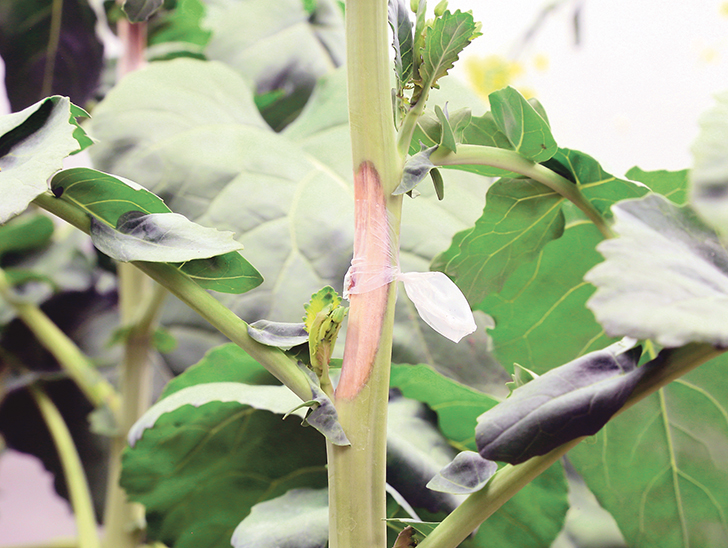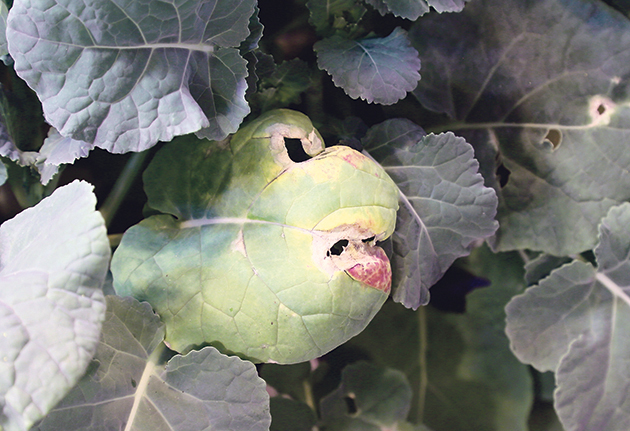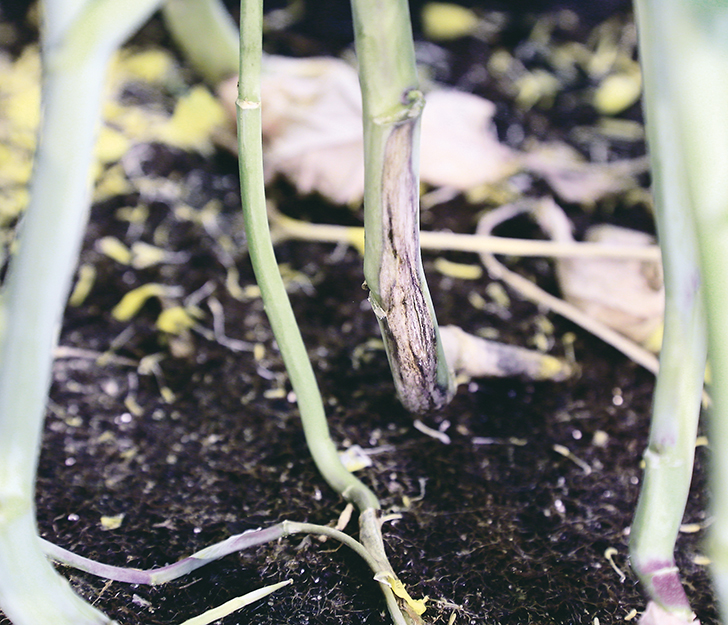
BASF’s research program in the agriculture greenhouses at the University of Saskatchewan is used to provide plant material for educational and marketing purposes. | Robin Booker photos
For eight months of the year, BASF’s research program in the agriculture greenhouses at the University of Saskatchewan is occupied with pre- and post-registration research.
For the other four months during winter farm show season, there is a shift in focus toward education and marketing.
“We’re growing all sorts of plant material to take out to different grower events and to speak to different grower organizations in western Canada,” said Russell Trischuk, manager of the program.
Growers who visit the BASF booth at these farm shows, or one of BASF’s Knowledge Harvest events, will see first-hand how agronomic practices and products affect crops, through examining living plants and diseases specimen.
“We’ve done a whole series of experiments where we’re taking plant material out and showing our customers what the impact of an early or late sclerotinia application is on managing that disease,” Trischuk said.
Read Also

Pakistan reopens its doors to Canadian canola
Pakistan reopens its doors to Canadian canola after a three-year hiatus.

Sclerotinia stem rot damages the main stem on the canola plant where infection is introduced.
| Robin Booker photo
The company also conducts demonstration experiments that examine the effects of seed treatment when there is a high degree of fusarium pressure. Both untreated and treated wheat seed are planted into soil infested with fusarium.
“You can see here the pot where we have five of them coming up when we used the seed treatment, and where we didn’t use the seed treatment we virtually have no emergence,” he said.
Another demonstration uses treated and untreated wheat seed infected with fusarium.
“When you have infected seed, it’s a little different than when it’s in the soils and you don’t necessarily get a reduction in germination to the same degree.
“But you’ll find the seeds that are infected will come out of the ground, but they come out quite stunted and often die.”
Herbicide resistant weeds are grown in the greenhouse to show growers the impact of different chemistries on the management of Group 2 and Group 9 resistant weeds common in Western Canada.
Dicamba tolerant soybeans are grown to demonstrate what happens if non-tolerant varieties are accidentally sprayed, compared to the tolerant soybeans.
Chickpeas inoculated with a resistant strain of ascochyta are grown to show how to manage the disease.
We’re “just showing how using multiple modes of action in fungicides and a prescribed fungicide program cannot only help grow a great chickpea crop, but also to help manage and minimize the impact of that disease,” Trischuk said.
Faba beans are grown to demonstrate the impact of BASF seed treatments, as well as different herbicides and fungicides chemistries.
BASF uses a university growth chamber to grow canola to maturity, so it can show growers when to combine diseased crops for best yield.
There is also a growth chamber used to grow blackleg-infected canola to help growers understand the role fungicides play in the management of the disease.

BASF is running experiments in which canola plants are infected with blackleg to show the effects of fungicides. Above, blackleg lesions are evident and the disease is well established on the lower canola stem. | Robin Booker photo
Blackleg hasn’t been common in most areas of the Prairies recently, so that has given BASF time to show growers, retail operations and agronomists what it looks like, Trischuck said.
“We’ve been able to show them the different leaf types of lesions and as we look over to the more mature plants, what those leaf lesions eventually manifest into,” Trischuk said.

Blackleg is well established on the lower canola stem. |Robin Booker photo
At a growth chamber the company calls the disease chamber, plants are infected with various diseases to demonstrate the impact of fungicides.
“(It) has a humidity tent we artificially infect plants in by essentially airbrushing inoculum that we’ve grown in the lab onto the plants. And we have to put them inside of this tent where we run a humidifier and have it at about 100 percent humidity to really allow those diseases to take hold,” Trischuk said.
Once infected, the plants are moved to an area where they are sprayed with water for 30 seconds every half hour, to allow the disease to take hold before being evaluated.
BASF will have some of these living demonstrations on display during its Knowledge Harvest Events to be held in March.















